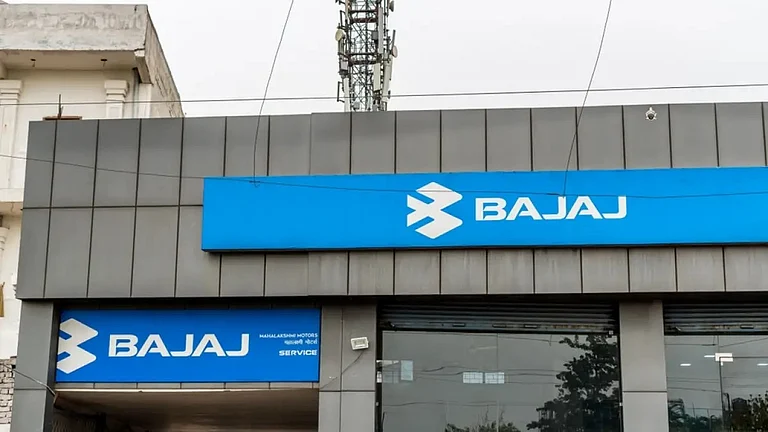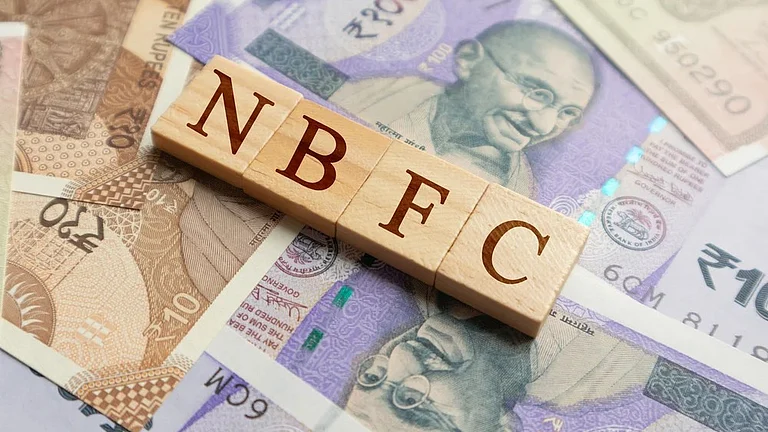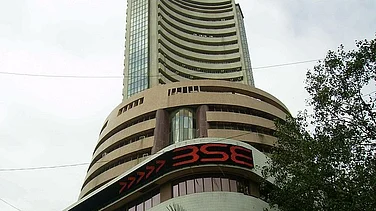While the headline numbers of Bajaj Finance’s Q1 earnings focuses on the company’s steady double-digit growth, the undercurrent beneath reveals stress unravelling in MSME and auto loans segments. Increased provisions to armour up against the rising loan stress, combined with an uptick in credit costs threatens to cool down on Bajaj Finance’s strong growth engine.
Even though the company reported double-digit growth on key parameters like net profit, revenue, net interest income and asset under management (AUM), consumer leverage stood out as a key concern for Bajaj Finance.
What’s Stressing Bajaj Finance?
Loan losses and provisions rose 26% year-on-year to ₹2,120 crore in Q1 FY26, up from ₹1,685 crore in Q1 FY25. Loan losses as a percentage of average assets under financing (AUF) stood at 2.02% in Q1, slightly higher than 1.99% in the same period last year and 1.97% in Q4 FY25. To make it worse, stressed assets (stage 2 and 3) rose by ₹878 crore in Q1, including ₹219 crore of standard accounts that were restructured. Of the total spike, stage 2 assets rose by ₹324 crore while stage 3 assets increased by ₹554 crore.
Bajaj Finance also identified consumer leverage as a key contributor to the stress it is facing across some loan segments, but still comforted investors that corrective actions are already underway. These include reducing exposure to borrowers with multiple loans across segments.
Even though damage control measures have been put in place, Bajaj Finance is unlikely to come out of this distress unscathed. The company expects the stress in these loan segments to keep AUM growth muted in FY26.
This slowdown is already visible in the Q1 numbers as AUM grew 21% year-on-year, still solid, but below the historical trend and earlier expectations of 24–25%.
Why the Stress?
One area where Bajaj Finance has grown fast is lending to MSMEs , which are micro, small, and medium-sized businesses. The twist in the plot is that with sticky inflation, slower rural recovery and sluggish macro conditions, some of these MSMEs are starting to struggle with servicing debt This means Bajaj Finance is seeing a rise in loan defaults or delays in this segment.
With that backdrop, GS-3 (gross stage 3) asset ratio, which tells us how much of a lender’s total loans are in serious trouble, went up slightly for the MSME category, to 1.32% in Q1 FY26, from 1.17% in Q4 FY25.
Analysts at Elara Capital pointed out that restructured MSME accounts worth ₹219 crore were the main reason behind the sharp rise in Stage 2 and 3 loan assets. They added that the increase in delinquencies in the 2-wheeler and 3-wheeler segments was more notional, as these business lines are already being phased out.
Building in continued asset quality woes, the brokerage reckons credit costs to remain sticky for Bajaj Finance at 2.2-2.3% and non-performing assets at 1.23% over FY26-28. Several brokerages, including the likes of UBS and Macquarie also came ahead and warned of the possibility of a further uptick in credit costs if the underlying stress pool expands.
Is Bajaj Finance Struggling in Silos?
The short answer is: no, Bajaj Finance is not struggling with stress in the MSME segment alone. The more layered answer is that several peers across the NBFC spectrum are grappling with broader stress in unsecured and micro-loan segments. The microfinance sector, in particular, has experienced sharp deterioration, its loan book shrank 4–12%, equity and borrowing declined by one-third, and stressed assets surged to 5.9% by March 2025. But, due to Bajaj Finance’s sizeable presence in the MSME segment, which comes under the unsecured, micro-loan umbrella, the problem looks unique to the company.
Other major NBFCs such as Shriram Finance and Cholamandalam also report rising early-stage stress in small and medium enterprises (SME) and vehicle finance--areas where they operate, although these entities are still expanding cautiously due to mixed portfolios and geographic diversification. On the other hand, gold-loan heavy lenders like Muthoot and Manappuram, by contrast, remain largely insulated from MSME-related stress.
However, what differentiates Bajaj Finance is its relatively swift, surgical response to the gradually rising stress by tightening underwriting, shrinking exposure to borrowers with multiple loans, and deliberate curtailment of AUM growth in pressured segments. While peers are still grappling with widening slippage across unsecured and micro-loan segments (up to 5.9% stressed assets in microfinance institutions), Bajaj looks to be ahead of the curve in cleaning up credit risk before it morphs into systemic drag .
Now while that might put near-term pressure on its earnings growth, the company remains confident to bounce back by the second half of FY26. The management also guided to revert to 24-25% AUM growth from around H2 FY26.































